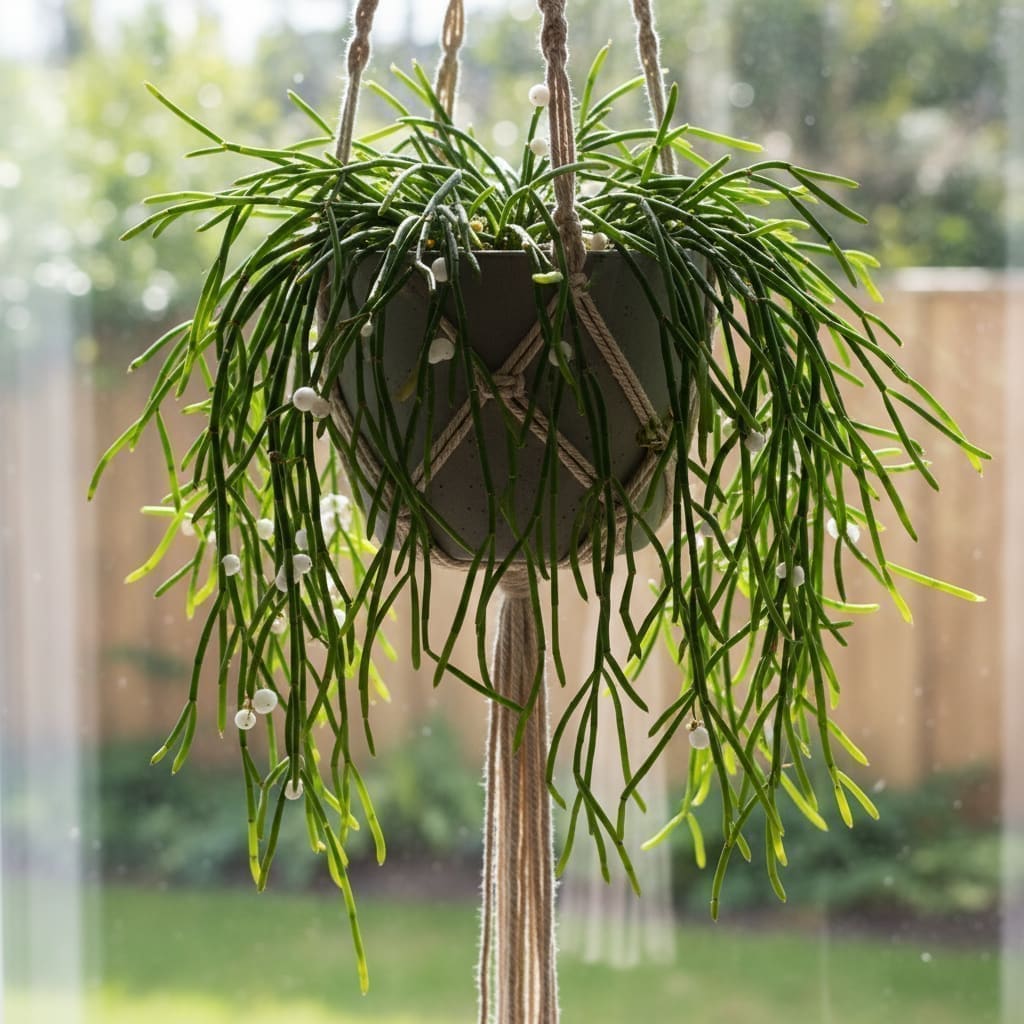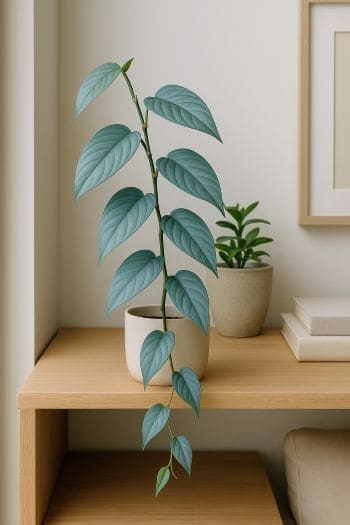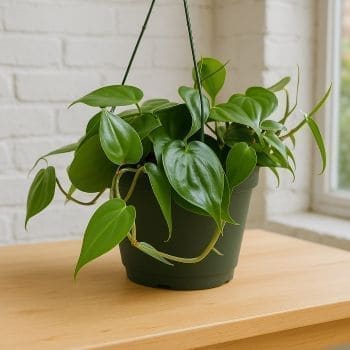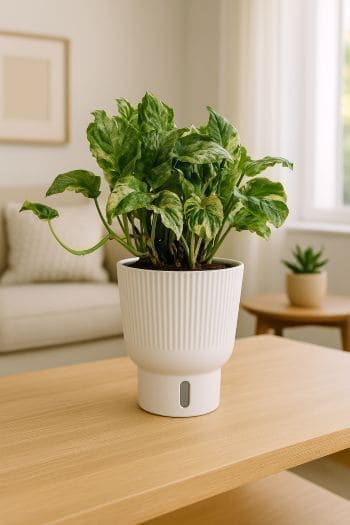Mistletoe Cactus (Rhipsalis spp.) Care & Growing Guide
Overview
The mistletoe cactus (Rhipsalis spp.) is a unique, epiphytic cactus native to tropical and subtropical regions of Central and South America, the Caribbean, and parts of Africa and Asia. Unlike desert cacti, it thrives in warm, humid environments under the canopy of trees, where it receives filtered light and steady moisture. Its slender, often cascading stems make it a popular choice for hanging baskets, shelves, and decorative containers indoors.
One of the most fascinating facts about Rhipsalis is that it is the only cactus genus naturally found outside the Americas, with some species occurring in Africa and Asia. This unusual distribution is thought to be the result of long-distance seed dispersal by birds.
Identification & Growth Habit
Mistletoe cacti are trailing or sometimes climbing plants with long, cylindrical or flattened green stems that may branch extensively. Depending on the species, stems can be smooth or finely bristled. In their native habitat, they often grow as epiphytes on tree branches, absorbing moisture and nutrients from rain and organic debris.
When mature, they may produce small, white to pale yellow flowers followed by translucent or white berry-like fruits. Indoors, flowering is more likely when the plant receives appropriate light and seasonal care.
Light & Placement
- Ideal light: Medium to bright indirect light.
- Tolerances: Can adapt to lower light but growth will slow.
- Avoid: Prolonged direct sunlight, which can scorch stems.
Place your mistletoe cactus near an east- or north-facing window, or a few feet back from a bright south- or west-facing window. In low-light rooms, consider supplementing with a full-spectrum grow light.
Watering & Humidity
Water when the top 1–2 inches (2.5–5 cm) of soil feel dry to the touch. Use a moisture meter for accuracy if desired. Always ensure the pot has a drainage hole to prevent waterlogging, which can cause root rot. Keep the soil evenly moist during the active growing season, but avoid letting it sit in soggy conditions.
High humidity is preferred. If indoor air is dry, especially in winter, increase humidity by:
- Placing the pot on a pebble tray with water (without submerging the base).
- Using a room humidifier.
- Grouping plants together to create a microclimate.
Maintain temperatures between 60–80°F (15–27°C) and avoid cold drafts or sudden temperature drops.
Soil & Repotting
Use a well-draining cactus or succulent mix enriched with organic matter to mimic its natural epiphytic environment. A blend of peat moss, perlite, and a small amount of coarse sand works well. This combination retains some moisture while allowing excess water to drain quickly.
Repot every 2–3 years or when the plant becomes root-bound. Choose a container that is only slightly larger than the current one to prevent excess soil moisture retention.
Fertilizing
Feed monthly during spring and summer with a balanced liquid fertilizer diluted to half strength. Reduce feeding in autumn and withhold fertilizer in winter when growth slows. Over-fertilizing can lead to weak, leggy growth.
Pruning & Training
Prune to remove damaged or overly long stems, and to encourage branching. Always use clean, sharp scissors or pruning shears to prevent disease spread.
While most growers display Rhipsalis as a trailing plant, it can be trained to climb a trellis or moss pole. Secure stems gently with soft ties and provide consistent humidity to encourage aerial root development.
Propagation
Step-by-Step: Stem Cuttings
- Select a healthy, mature stem segment 3–6 inches long.
- Use clean scissors to cut just below a segment joint.
- Allow the cutting to callus for 24 hours in a dry, shaded place.
- Prepare a small pot with moist, well-draining cactus mix.
- Insert the callused end 1–2 inches into the soil.
- Place in bright, indirect light and maintain high humidity.
- Water lightly when the top layer of soil begins to dry.
- Roots typically develop within 3–6 weeks under warm, humid conditions.
Common Problems
Pests
- Mealybugs: Look for white, cottony clusters on stems. Remove with a cotton swab dipped in isopropyl alcohol and treat with insecticidal soap.
- Spider mites: Fine webbing and stippled stems indicate infestation. Increase humidity and use miticide or insecticidal soap.
- Scale insects: Brown, shell-like bumps. Scrape off gently and treat as for mealybugs.
Diseases
- Root rot: Caused by overwatering or poor drainage. Remove affected roots, repot in fresh, dry mix, and adjust watering practices.
- Stem rot: Soft, discolored stems may result from fungal infection. Prune away damaged sections and improve air circulation.
Toxicity & Pet Safety
Mistletoe cactus is considered toxic if ingested. Keep out of reach of pets and children, and seek veterinary advice if accidental ingestion occurs.
Styling & Decor Tips
- Display in hanging baskets to showcase trailing stems.
- Place on high shelves where stems can cascade naturally.
- Combine with other tropical plants for a lush, layered look.
- Use decorative ceramic or terracotta pots to complement the plant’s texture.
Varieties & Cultivars
The genus Rhipsalis includes over 35 species, each with distinct stem shapes and sizes. Popular species for indoor growing include:
- Rhipsalis baccifera – the most widespread species, with long, thin stems and white berries.
- Rhipsalis pilocarpa – features bristly stems and fragrant white flowers.
- Rhipsalis campos-portoana – with thicker, more angular stems.
Buying Tips & Maturity
When purchasing, look for plants with firm, unblemished stems and no signs of pests. Avoid specimens with mushy or discolored sections. Younger plants may be compact, but with proper care, they will develop long, cascading stems over several years.
Seasonal Care
- Spring/Summer: Active growth period; water regularly, fertilize monthly, and maintain high humidity.
- Autumn: Gradually reduce watering and feeding as growth slows.
- Winter: Keep in bright, indirect light, water sparingly, and protect from cold drafts.
FAQ
- How fast does mistletoe cactus grow? Growth is moderate; expect noticeable lengthening of stems during the warm months.
- Can I grow it outdoors? In frost-free, humid climates, yes—preferably in shaded or filtered light locations.
- Why are my stems shriveling? Likely due to underwatering or low humidity; check soil moisture and adjust care.
- Will it flower indoors? Yes, with adequate light, humidity, and seasonal changes, though flowering is more common in mature plants.
- Does it need a moss pole? Not required, but can be used if you wish to train it upward instead of trailing.






